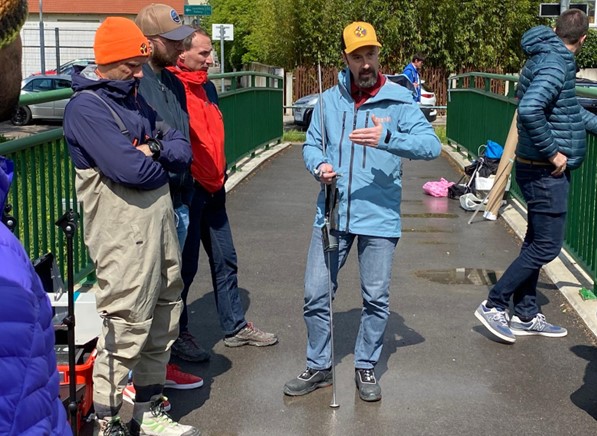We were thrilled to have FDRI science highlighted at the European Geosciences Union (EGU) annual general assembly. Taking place from 27 April to 2 May in Vienna, this landmark event in the environmental research calendar welcomed over 20,000 scientists from 120 countries to share knowledge and new innovations in environmental science.
The opportunities for both technological and social innovation in FDRI through open hardware were presented by Wouter Buytaert (Imperial College London) and Alejandro Dussaillant (UKCEH) alongside the FDRI implementation strategy and approach. This was a valuable opportunity to introduce the international research community to FDRI.
Alongside this, our paper highlighting user priorities for innovation within hydrological monitoring infrastructures was published as part of EGUsphere, a culmination of months of stakeholder interviews and feedback gathering to ensure innovation within FDRI is as accessible as possible.
Gemma Coxon (University of Bristol), presented the CAMELS-GB dataset, which will provide daily and hourly hydro-meteorological data for 671 catchments across Great Britain alongside catchment attributes to enable new hydrological process understanding and modelling, particularly for the analysis of extremes. It is a large collaborative effort, led by the University of Bristol and made possible through FDRI and the Environment Agency Flood Hydrology Improvement Programme.
Three sessions of relevance to FDRI were convened and chaired by Nick Everard (UKCEH). The first, a ‘Union Symposium Session’ entitled ‘Advancing Measurements and Observations in the Geosciences’, explored a range of topics including large- and small-scale satellite observations of hydrometeorological variables, advancements in greenhouse gas monitoring and pioneering work on ultra-low-cost sensing of hydrometeorological variables in Africa. Nick’s second session on ‘Advances in river monitoring and modelling, including UAS and satellite based methods’, included his poster presentation on the use of drone-mounted cameras to measure river velocity which we are testing in FDRI, as well as 20 other presentations on innovations in river monitoring. Nick acted as co-convener in a session on the use of satellite 'Remote Sensing for Flood Dynamics Monitoring and Mapping', techniques that will be explored during the FDRI project.

flow monitoring methods at EGU 2025 in Vienna
Finally, Nick helped organise a practical field session in which a variety of the latest river flow monitoring technologies - including many that may be used for FDRI monitoring - were demonstrated and compared against one another in a small river in a suburb of Venna. The session finished with a comparison of results in a nearby cafe.
By exchanging knowledge with other researchers we not only help to build capacity within the research community through developments made in FDRI, but also learn from the best and brightest around the world to improve hydrological monitoring within FDRI.
